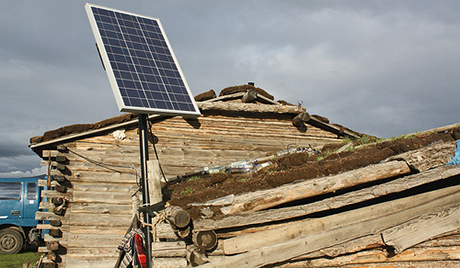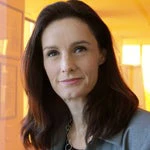
Since the launch in 2008, the World Bank’s green bonds have grown quickly and reached an important milestone in August. Earlier, this month, the World Bank launched a US$550 million green bond bumping the total amount of World Bank green bonds issued to over $4 billion dollars since the green bond program began. This milestone prompted us to pause and take stock of the program and the new market it helped start.
As countries move toward a low-carbon, climate resilient future, the appetite for innovative climate finance is growing. One way to fill this financing need is through the capital markets. The World Bank’s green bonds, first launched in 2008, have been recognized as a catalyst for the growing market of climate bonds. This market is on its way to becoming an important source of funding for countries looking to grow in a clean and sustainable manner. A sampling of expected project results – over 165,000 tons of carbon dioxide equivalent emission reduction benefits per year in Belarus, and 800,000 tons per year in China, reducing vulnerability to climate-related flooding and water scarcity flood events for about 500,000 farmer households in Indonesia, and producing 6MWhs of electricity out of a landfill in Jordan – highlights the crucial role green bonds and other innovative funding mechanisms could play in financing the fight against climate change.
The World Bank started issuing green bonds in 2008, responding to a group of Scandinavian pension funds interested in supporting activities that address mitigation and adaptation to climate. Skandinaviska Enskilda Banken (SEB) was the lead manager of this inaugural green bond.
Since then, proceeds have supported projects in energy efficiency (e.g. China, Belarus and Montenegro); renewable energy in solar, geothermal, biogas, and hydropower (e.g. Indonesia and Jamaica); sustainable urban transport (e.g. Colombia and Mexico); waste management (e.g. Brazil); water scarcity and floods (e.g. China and the Dominican Republic), and forest management (e.g. Mexico and Tunisia). There are 45 eligible projects approved for green bond support in 19 countries and are disbursing to 37 projects in 17 countries.
Apt Timing
The green bonds were introduced about the same time as the World Bank Group’s Strategic Framework on Development and Climate Change was stepping up its support to clients and seeking innovative finance opportunities for action on climate action change. The design of the World Bank green bonds catered to an “original” group of investors, who asked for a product with the same standards and safe credit quality as the World Bank’s regular bonds but with a defined purpose. They valued the Bank’s strong due diligence procedures for projects that they could not efficiently replicate.
The issuance of the first World Bank green bond also marked the start of a dedicated focus to seek out other similarly minded investors around the world. We thought if these green bond investors liked the product, there must be more investors. Pension funds alone managed trillions of US dollars, not to mention asset managers and other investors. We recognized that green bonds would help mobilize private sector financing for climate activities, help us diversify our investor base and send a powerful signal internally and to our member countries that investors want to support their climate efforts.
To date, the World Bank has sold 60 green bonds in 17 currencies to institutional and individual investors in Europe and Japan, and increasingly also in the US. More than 60% of the last $550 million World Bank green bonds were sold to US investors, including the lead order from the California State Treasurer’s Office, one of the first US investors in green bonds. Nikko Asset Management increasingly offers its World Bank green bond funds to US investors. Many green bond investors were new investors for us, or new funds created by new mandates focused on climate investing.
More players in the market
We also see a growing number of issuers in the market and increasing bond sizes. For example, this year International Finance Corporation’s $1 billion green bond and European Investment Bank’s Euro 650 million climate awareness bond generated a lot of media attention. Asian Development Bank, African Development Bank, European Bank for Reconstruction and Development, Inter American Development Bank, and Nordic Investment Bank have also issued green or similar themed bonds. Government agencies like the Export Import Bank of Korea and Rentenbank, and a few months ago, the first US municipality (State of Massachusetts) issued green bonds modeled after World Bank green bonds. If you include structured project finance and securitization, then, according to the Climate Bond Initiative, more than a thousand bonds have been issued, generating hundreds of billions of dollars for climate finance.
On the investor side, US pension funds like TIAA-Cref and large asset managers like Blackrock and Deutsche Wealth and Asset Management recently joined the market. Several intermediaries joined SEB to play a pioneering role including Bank of America Merrill Lynch, Citibank, Credit Agricole, Daiwa, HSBC, JP Morgan, Morgan Stanley, TD Securities, and Westpac.
Others with a key role in the establishment and growth of the climate bond market so far include the Center for International Climate and Environmental Research in Oslo (CICERO), the Climate Bonds Initiative, investment consultants like Mercer and Cambridge Associates, and firms like MSCI, Oekom and Sustainalytics, who provide tools for investors interested in climate bonds or incorporating environmental, social, and governance factors in their investment decisions in general.
As the green bond market grows, so has investor interest in the kind of climate-related projects they support and how they compare to those financed by other issuers.
In the case of the World Bank, we developed the criteria to define what is considered “green” in collaboration with the original group of investors. Using a reputable third party (CICERO) to help define these criteria and our specialized expertise to select projects provides investors assurance of a robust process. Transparency is also a key factor. The criteria are published on the website and documented in the terms for each bond. Investors have access to detailed project information on the web, to the World Bank Projects Portal, our updates on Treasury’s green bond website, and the annual World Bank green bond newsletter.
Calls for green bond principles
To support the growth of the green bond market as it expands to include different types of issuers and risk categories, we’re hearing increasing calls from investors and banks for a set of principles or standards to bring more clarity around what is included as eligible, how the criteria are applied, and what internal process each issuer follows. With increasing issuance volumes, there is a concern that new issuers use different criteria, or don’t have adequate safeguards, internal processes or disclosure guidelines compared to the early green bond issuers. Therefore, it could be helpful for issuers, investors, intermediaries and other market players to agree on a general green bond framework that would likely evolve over time as the market matures and science around climate change develops further. The World Bank is convening discussions with market participants towards such a goal.
What does this all mean for the yet unsolved problem of finding more and affordable finance for action on climate change?
Green bonds are an important step toward filling the financing gap and spurring additional private sector investment – especially as the market continues to grow and expand to different products. A view echoed by Doris Herrera-Pol, Director and Global Head of Capital Markets at the World Bank, who said after issuing the most recent bond: "World Bank Green bonds act as a catalyst for the growing green bond market that helps mobilize increased private capital flows to climate-focused projects. We are grateful for the support from pioneering investors, banks, issuers and others who are working to help expand this market and work towards a goal that benefits us all."


Join the Conversation
This is great news. I fully support this wholesome and positive endeavor. I personally had thought recently about doing something similar for private energy companies, specifically coal-fired power plant companies, who whine and complain that it is too expensive for them to retrofit their plants with the latest stack emission reduction equipment. I thought: why not establish a bond market for interested... investors to invest in company-issued bonds whose proceeds were to be used only for the upgrading of their plants with the best available technology. What the World Bank is doing with its green bond program could apply wonderfully to the private sector, I believe.
Read more Read lesswhere can I Buy Green bonds of the world bank Group in Europe, I did not find serious information